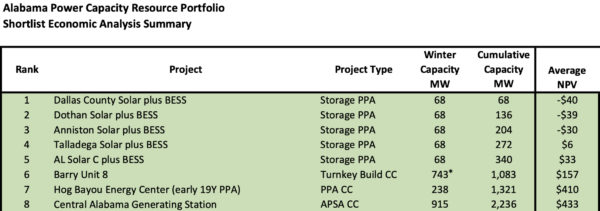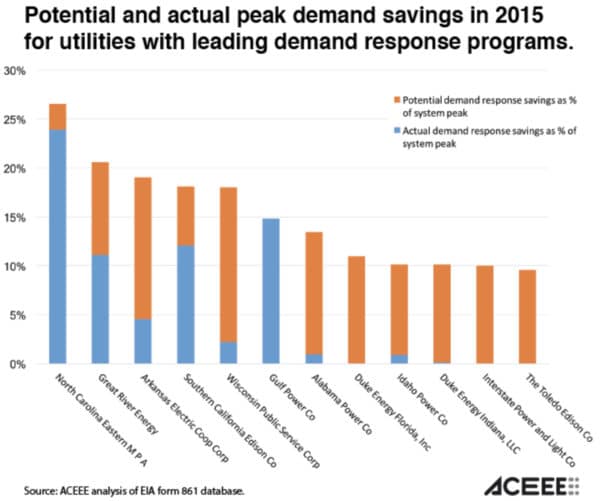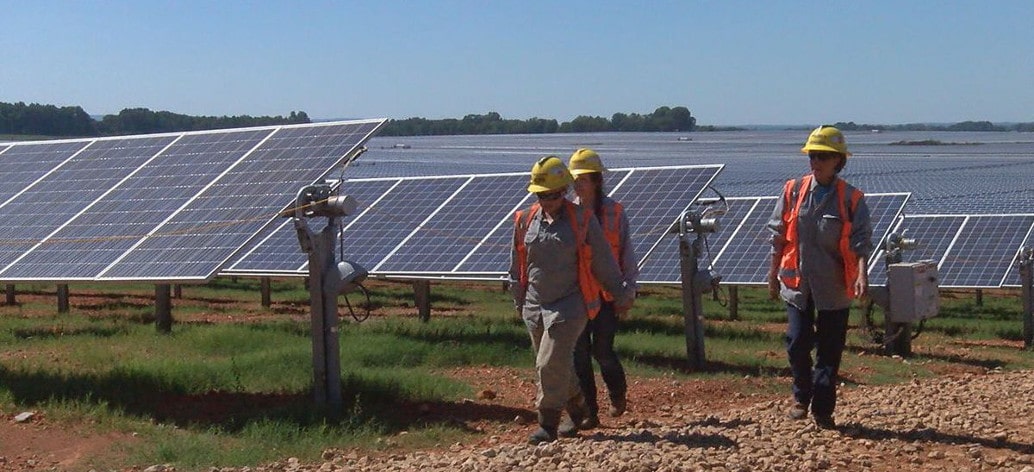“Alabama Power’s own analysis shows that clean energy is the more affordable alternative” to the 1,900 MW of new gas units for which the utility seeks state approval, said attorney Christina Tidwell with the Southern Environmental Law Center, in a statement following a regulatory hearing on the request.
Opponents challenged Alabama Power’s plans from all angles in expert testimony during the proceedings leading up to the hearing.
In testimony for Alabama Industrial Energy Consumers, veteran energy adviser Jeffry Pollock said state regulators should deny Alabama Power’s request “until capacity is needed.” Because Alabama Power is a subsidiary of Southern Company, which “does not need additional capacity” for some number of years, Pollock said that “until then, Alabama Power can meet its capacity obligations under the Southern Intercompany Interchange Contract.” (The specific year was blacked out in the public testimony.)
Former Texas utility commissioner Karl Rabago, testifying for citizen groups Energy Alabama and Gasp, said Alabama Power’s proposed rate increases are driven by the costs of its proposed gas plants, which have weighted average net costs of $322 per kW. In contrast, the utility’s proposed 340 MW of solar-plus-storage projects have net benefits of $14 per kW.
Rabago based those figures on the last column of the Alabama Power analysis below, which Tidwell also flagged as significant. (Alabama Power calculates “NPV” as costs minus benefits, so negative values in the last column mean positive net benefits.)

“An aggressive mix of additional large-scale renewables, solar with storage, demand-side management, and distributed energy resources would have been less costly and less financially risky” than Alabama Power’s proposed gas-heavy plan, Rabago concluded.
Other issues raised with regulators were the strong pace of solar installations in nearby states, the burden of electric bills on low-income residents, deficiencies in the utility’s integrated resource plan, and opportunities for peak demand savings from demand response programs.
Ten Southeastern states are expected to add 25 GW of solar through 2024, with nearly 90% of that concentrated in five states, said Maggie Clark, senior state affairs manager for the national solar trade association SEIA, in testimony for the Alabama Solar Industry Association. Alabama “can look at the lessons learned in other states,” said Clark, to “take advantage of the low cost, clean energy that is abundant across state lines,” and the associated jobs and tax revenues.
Twenty-nine percent of households in Alabama said they skipped buying necessities at least once in 2015 to pay for home energy bills, while in 2018 Alabama Power collected $9.9 million in late payment fees, testified John Howat, a senior policy analyst at the National Consumer Law Center. He suggested that’s largely because residential electricity use in Alabama was recently the third highest in the nation, while 24% of households in the state have incomes below 1.5 times the federal poverty level. Howat recommended that regulators reject the proposal from the utility, which serves 58% of Alabama’s residential customers, “in its entirety.” Howat testified on behalf of Energy Alabama and Gasp; his testimony, like that of Karl Rabago, was sponsored by the Southern Environmental Law Center.
“Alabama Power has not demonstrated that its proposed resource portfolio is least-cost to customers,” testified Rachel Wilson, a principal associate for Synapse Energy Economics, on behalf of the Sierra Club. Wilson said that a resource mix of 50% demand-side management measures and 50% renewables would cost less than a proposed 743 MW gas unit, as determined by using the Rocky Mountain Institute’s Clean Energy Portfolio tool.
Alabama Power’s IRP
Alabama Power’s request was based on an integrated resource plan (IRP) process, for which it provided a summary to regulators and the public. Yet Karl Rabago said “the IRP summary reports are the least transparent and most poorly documented IRP documents that I can recall ever reading,” and that “the Company’s IRP documents are opaque black boxes that primarily state conclusions.” In response to requests for documentation, he said, the data provided by the utility was “unorganized and unsupported by details about how assumptions impacted resource choices or the selection of the benchmark plan.”
Rabago recommended that Alabama regulators consider developing and adopting integrated resource planning rules to apply to the utility.
Demand response
Alabama Power has “enormous potential to reduce peaks and customer costs” through demand response programs, Rabago said. He cited the following chart from a 2017 post by the American Council for an Energy-Efficient Economy, showing Alabama Power as the seventh bar, with about a 13% demand reduction potential yet only 1% of demand response savings. Gulf Power, one bar to the left and solid blue, achieved all 15% of its demand reduction potential. “Alabama Power barely performed and plans to do little in the future,” Rabago testified.

Alabama Power’s request for added capacity and associated rate increases, and testimony from intervenor groups, is available from the Alabama Public Service Commission’s docket search site, under docket number 32953.
This content is protected by copyright and may not be reused. If you want to cooperate with us and would like to reuse some of our content, please contact: editors@pv-magazine.com.








““Alabama Power’s own analysis shows that clean energy is the more affordable alternative” to the 1,900 MW of new gas units for which the utility seeks state approval, said attorney Christina Tidwell with the Southern Environmental Law Center, in a statement following a regulatory hearing on the request.””
It seems like the RFP competitive bid process is showing costs coming down almost with every large scale generation and energy storage facility pairing constructed. At least the “promise” of economies of scale while using technologies like redox flow batteries looks to be $1,000/kWh a few years ago, if one goes with the GW scale, one could get this down to the $100/kWh or less. Some very liberal predictions of costs has some technologies at $50/kWh or less, even for smaller energy storage units. The utilities like their “fueled” generation resources, for the most part there’s really nothing new to the technology, even when solar PV, wind generation and energy storage is more attractive on a life cost of purchasing and building an alternative energy plant, the utilities are still allowed to get rate increases for “stranded assets”. So, the utility is “allowed” to go the actual least cost effective and often less efficient generation method and when the asset is no longer profitable a cry goes out to “subsidize” the fueled asset or increase electricity rates to erase the remaining cost of the stranded asset. Perhaps it’s time to get with the “intelligent design” concept to do the right thing the first time and abrogate stupid spending, short term solutions and stranded assets the ratepayers get stuck with.
What I really like is when utilities propose someone like closing a 300MW coal plant and replacing it with a 900MG NG plant because some magical future demand will somehow appear even though the data says otherwise.
Good that there are groups pushing back on deployment of these huge FF assets. Like you said they want to be paid to deploy them now and then want to be paid because of their bad planning and the asset has become a liability.